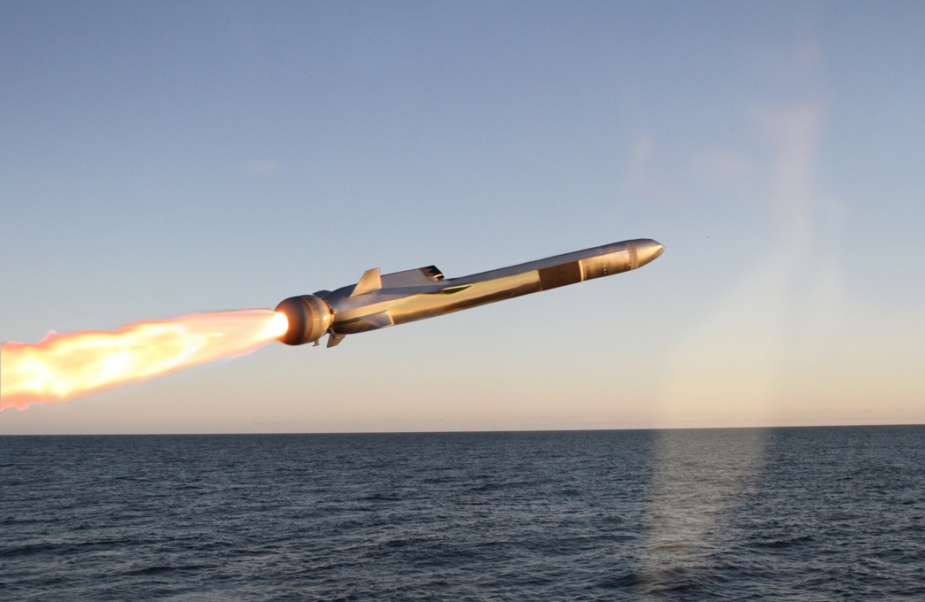Breaking news
Spanish Navy acquires Kongsberg Naval Strike Missiles.
The Spanish Navy has enhanced its offensive capabilities with the acquisition of Naval Strike Missiles (NSM) from Kongsberg Defence & Aerospace, a Norwegian defense contractor. This significant purchase, valued at 305 million euros, marks a substantial advancement in Spain's naval armaments. The announcement was made by Kongsberg on December 15, 2023.
Follow Navy Recognition on Google News at this link
 The NSM is a versatile cruise missile designed for anti-ship or land attacks, developed in Norway. (Picture source: Kongsberg)
The NSM is a versatile cruise missile designed for anti-ship or land attacks, developed in Norway. (Picture source: Kongsberg)
Kongsberg's Naval Strike Missiles excel in long-range operations against maritime and land targets. Key features include high resistance to modern air defense systems and the ability to autonomously recognize ship classes, making them a formidable addition to any naval fleet.
The initial integration of these missiles will be on the F-110 class frigates, which are currently under construction by the Spanish naval construction company Navantia. Additionally, the NSM will be fitted onto the F-100 frigates during their mid-life updates and are expected to be included in future Spanish naval vessels.
The NSM is a versatile cruise missile designed for anti-ship or land attacks. Developed in Norway, the missile has been in service since 2012 and is used by several countries, including Norway, Poland, the United States, Germany, and the United Kingdom. Its unit cost was around 2,194,000 dollars in 2021.
The NSM has a mass of 400 kg with its booster and 350 kg without the booster. Its length is 3.96 meters with the booster and 3.48 meters for the missile alone. In terms of width, the NSM measures 700 mm when stowed and extends to 1.36 meters with its wings deployed.
This missile is equipped with a titanium-cased warhead capable of penetration, blast, and controlled fragmentation, weighing 120 kg. It is powered by a Microturbo TRI-40 turbojet, supplemented by a solid rocket booster. The NSM has an operational range of over 200 km for the standard version and up to 250 km for the NSM 1A version.
The NSM can fly at low altitudes, close to the sea surface, enabling it to evade radar detection. Its maximum speed reaches Mach 0.93. The NSM's guidance system combines a GPS-assisted inertial navigation system (INS), a laser altimeter, a TERCOM system for terrestrial navigation, and imaging infrared (IIR) guidance, providing high precision in target detection and strike.
The missile acquisition process was conducted through the NATO Support and Procurement Agency (NSPA), marking it as Kongsberg's first missile contract facilitated by this agency. The NSPA plays a crucial role within NATO, combining acquisition, logistics, medical, and infrastructure capabilities to meet a wide range of customer needs.
In conjunction with this contract, Kongsberg is set to sign a cooperation agreement with Spain's Directorate General for Armament and Material (DiGAM). This partnership aims to foster Spanish industry involvement, potentially integrating Spanish companies into the global missile supply chain. Additionally, there's a proposal to establish a comprehensive life cycle maintenance capacity for the NSM at the Rota Naval Base, in collaboration with local industries.
The NSM is already in use by various nations, including Norway, the United States, Poland, Romania, Canada, Germany, Australia, Malaysia, the UK, The Netherlands, Belgium, and Latvia. Its adoption by Spain further solidifies its status as a leading anti-ship missile system globally.























